Wildflowers, Grasses and Other Nonwoody Plants
Species Types
Scientific Name
Bromus pubescens (formerly B. purgans)
Description
Several species of brome grasses are found in Missouri. Canada brome, or hairy woodland brome, is one of the few that are native. It grows to 4 feet high, and its open flower clusters have drooping spikelets.
Media
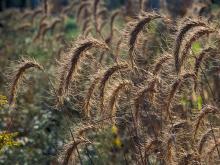
Species Types
Scientific Name
Elymus canadensis
Description
Canada wild rye can be identified by its bristly seed heads, which curve downward. As the seeds mature, the straight, long awns curve and bend. This is a common native cool-season grass that reaches about 4 feet tall and is highly valued as forage and hay for livestock.
Media
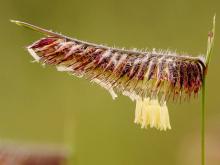
Species Types
Scientific Name
Bouteloua hirsuta
Description
Hairy grama is a native perennial warm-season short grass that forms dense clumps. The flowering stems are 4–16 inches tall, and the short, curving, one-sided, hairy seed head ends in a needle-like point. Very uncommon in our state, it occurs mostly in the loess hill prairies of northwest Missouri.
Media

Species Types
Scientific Name
Dactylis glomerata
Description
Orchard grass is a perennial, clump-forming, cool-season grass introduced to American pastures long ago. Identify this common roadside grass by its bluish-green leaves, flattened stalks, and dense, flattened, bushy clusters of spikelets.
Media
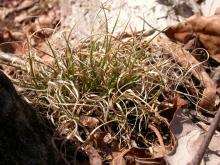
Species Types
Scientific Name
Danthonia spicata
Description
A common sight in dry upland Ozark woods, poverty grass is a species you can identify by its leaves alone. The basal leaves persist for several years, becoming dry and curly. Although the flowering stems can be 2 feet high, the basal leaves are only about 5 inches long.
Media
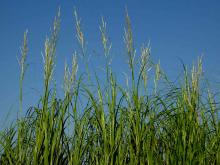
Species Types
Scientific Name
Spartina pectinata
Description
Prairie cordgrass is a native perennial sod-forming grass with flowering stalks up to 7 feet tall. A grassland species, it grows in dense stands in low, damp soils. It’s often called ripgut because of the tiny sharp saw teeth on the leaf edges.
Media
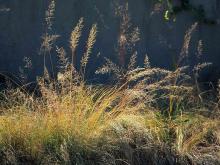
Species Types
Scientific Name
Sporobolus heterolepis
Description
Prairie dropseed is a native perennial bunch grass that forms dense clumps of fine, light green, arching leaves. The seed heads are airy, open, branching clusters bearing small, ovate florets on their own individual branchlets.
See Also
About Wildflowers, Grasses and Other Nonwoody Plants in Missouri
A very simple way of thinking about the green world is to divide the vascular plants into two groups: woody and nonwoody (or herbaceous). But this is an artificial division; many plant families include some species that are woody and some that are not. The diversity of nonwoody vascular plants is staggering! Think of all the ferns, grasses, sedges, lilies, peas, sunflowers, nightshades, milkweeds, mustards, mints, and mallows — weeds and wildflowers — and many more!





















